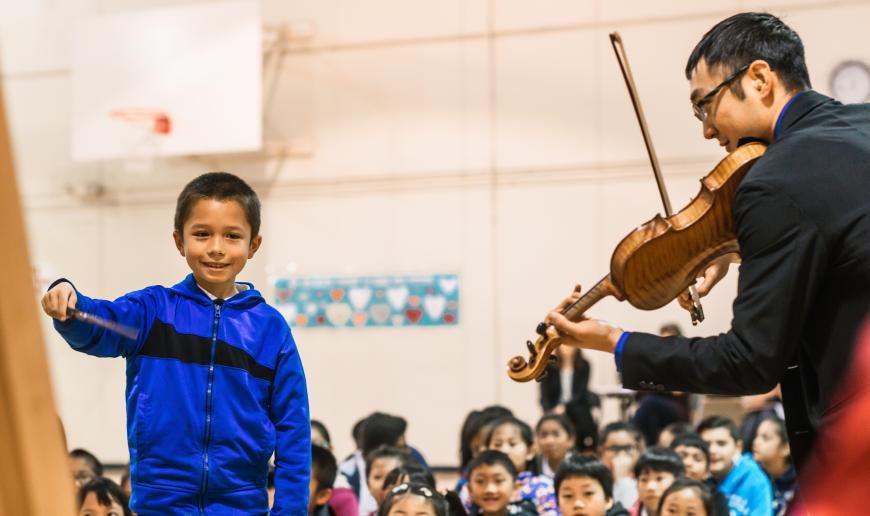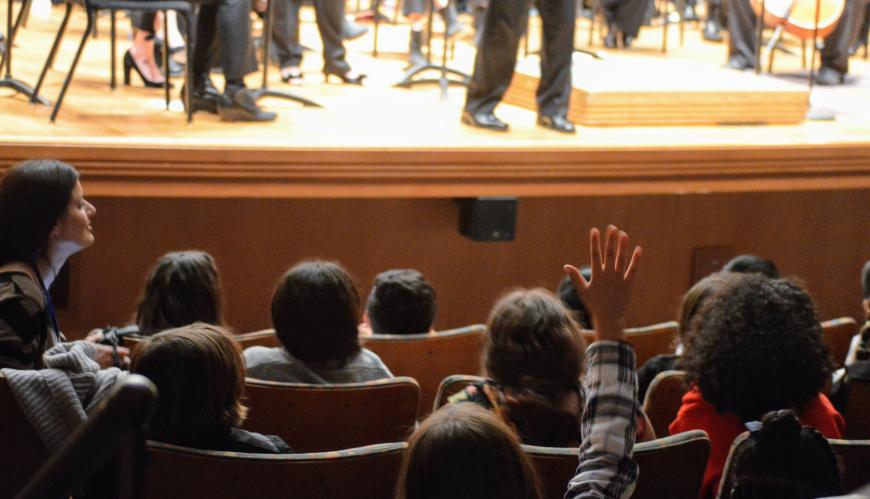
Are you concerned that, in this age of digital communication and constant distraction, young people are not getting exposed to the arts? The state of California clearly agrees.
The California Arts Council has revealed the recipients of its second round of grants for 2022–2023, and the emphasis is squarely on education.
This new round features more than 900 grants totaling more than $41 million. Combining that with the first round, which was announced in June, makes $72 million in grants, which the CAC calls “the biggest annual investment in the California Arts Council’s 46-year history.”
Of that total, $40 million was earmarked for “a one-time boost in support for the agency’s creative youth and arts education development programs.” That emphasis is reflected in the programs that received funding, which mostly focus on either exposing students to the arts or helping “develop the professional artists of tomorrow,” in the words of Jennifer Kallend, vice president of communications at the Colburn School.

That downtown Los Angeles institution received two grants. The first, for $54,000, will support the school’s Musical Encounter and Zipper Orchestra programs, which together “will introduce 5,600 underserved elementary students in L.A. Title I schools to the performing arts.” The second, for $45,000, will help music and dance students “build sustainable careers as artists in the 21st century and equip them with the skills needed to serve their community,” Kallend said.
The San Francisco Symphony received a similar pairing of grants. One, for $54,000, will support a program which provides free concerts at Davies Symphony Hall for first- through fifth-grade students in all of the San Francisco Unified School District’s elementary schools. The second, for $60,000, will provide 4,500 hours of instrumental instruction and coaching to students in 41 ensembles across 23 of the district’s middle and high schools.
Los Angeles Chamber Orchestra is “particularly energized” by its $54,000 grant, according to Executive Director Ben Cadwallader.
“These funds go directly toward LACO’s ‘Meet the Music,’ which provides thousands of public elementary school students with in-school arts education and allows LACO to employ and train five outstanding early- to mid-career composer teaching artists to work in classrooms with students and teachers,” he said. “The program culminates in a performance with the professional musicians of LACO bringing the student pieces to life.”
The San Francisco Ballet Association received three grants. The first, for $60,000, will be used to provide dance education for San Francisco Unified School District students. The second, also for $60,000, will go toward student matinees of SF Ballet performances. The third, for $38,000, will allow the SF Ballet School to offer full scholarships to approximately 12 young dancers.
Joe Goode Performance Group also received three grants. One, for $57,000, will support the “Inspired Bodies” dance-theater program, in which Bay Area high school students are exposed to the company’s aesthetics and methods. Another, for $38,000, will help fund a program in which middle and high school students work with professional dancers to create an original work based on their own experiences.

Among the many other recipients are Pacific Symphony, Monterey Jazz Festival, Pacific Opera Project, Ojai Festival, Berkeley Symphony, and the Performing Arts Center of Los Angeles County. A full list can be found here.
According to the Legislative Analyst’s Office, this year’s state budget provides a total of $108 million to the CAC. That’s a net decrease of $45 million, or nearly 30 percent, from the 2021–2022 budget, which was overstuffed with pandemic-era spending. But it is still a huge increase from the agency’s traditionally low level of funding, which was only $26 million in 2020–2021.
For information on current and future grant opportunities, go to the agency’s website.


